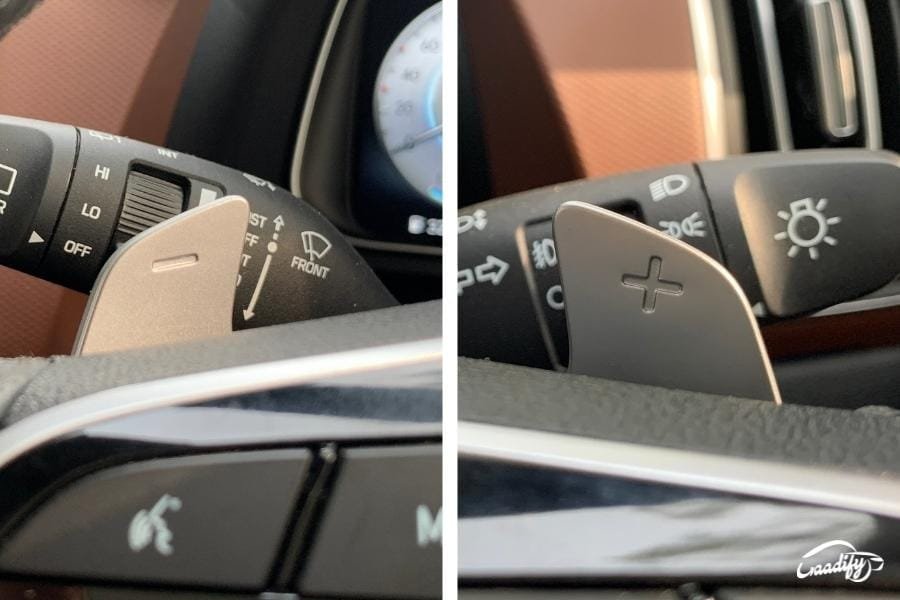Automatic transmissions are slowly coming up in terms of popularity, may it be because of their paramount convenience over manual transmissions or the fact that it has a lesser learning curve, they are on the come up and they are coming fast!
How convenient as it may be, it takes a lot of control away from the driver, and it can get rather frustrating in cases where you want your car to upshift or downshift but you can’t really do it. Here is where paddle shifters come in, a technology that started out majorly in supercars has now made its way into Honda, Kia, and now Maruti Suzuki’s cars. Let’s see what paddle shifter technology actually is and how it can help provide that control back to your hands while retaining the convenience of an automatic.
Also Read: Tata Punch, Nexon, and Altroz iTurbo To Get DCT Automatic Transmission Soon
What are paddle shifters?
Paddle shifters are nothing but little buttons placed on the back of your steering wheel, which can actually trigger the actuators responsible for upshifting and downshifting in an automatic transmission.
How do paddle shifters work?
If you’ve ever driven or owned an automatic transmission like AMT, DCT, or torque converter, you would know that they have a manual mode in which you can flick on the gear shifter and then take manual control of upshifts (although downshifts still happen automatically). Paddle shifters work on the same principle but are just now placed at the back of your steering wheel for better convenience.
In most cases, the right shifter is responsible for upshifts, and the left shifter is responsible for downshifts, but nowadays both can be used for performing upshifts and downshifts.
In a world shifting towards the convenience of automatics, paddle shifters still offer that sense of control, and although not a full-fledged manual, having control of our upshifts and having the ability to downshift for a quick overtake is a welcome ability!


